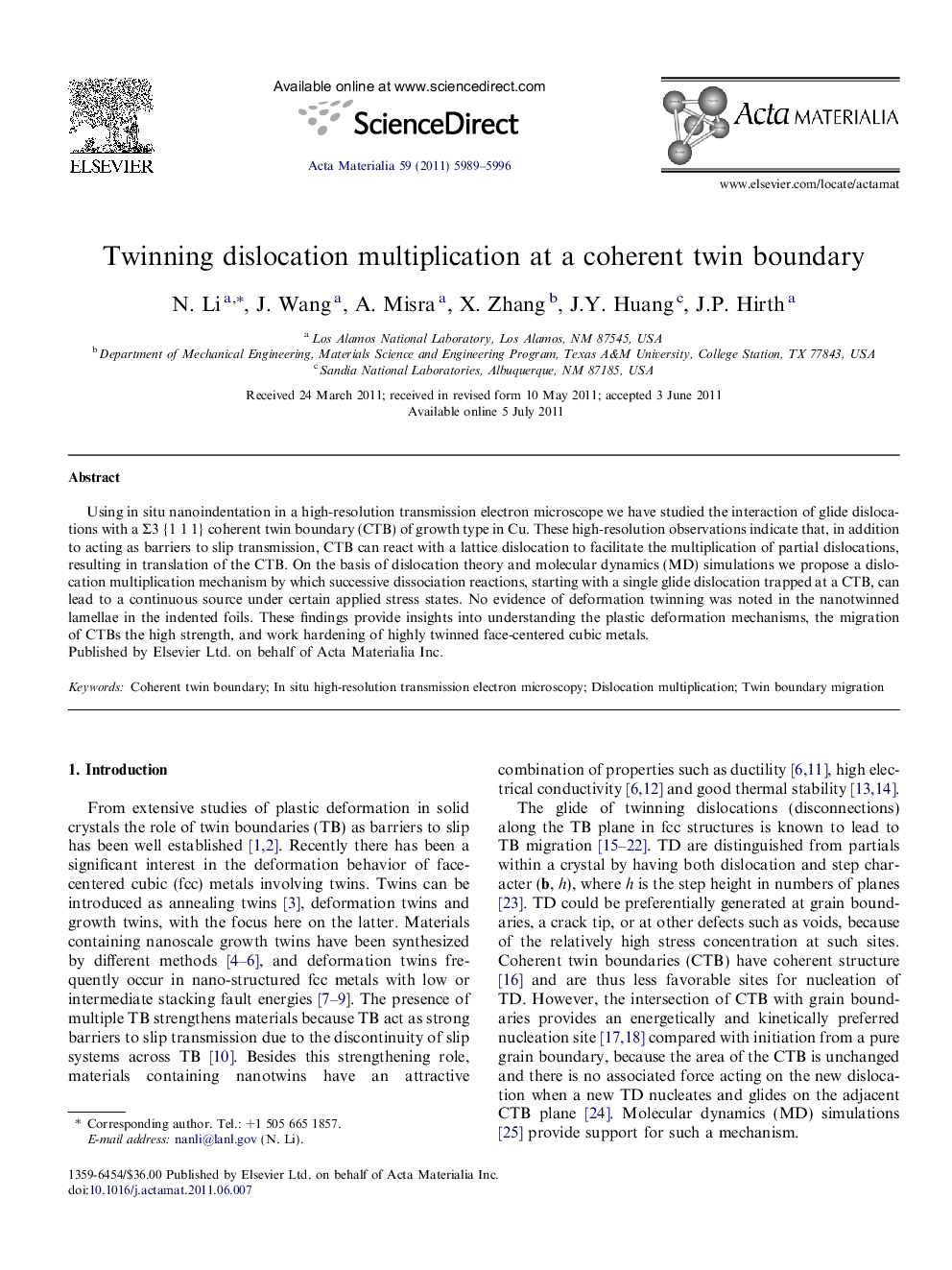| Article ID | Journal | Published Year | Pages | File Type |
|---|---|---|---|---|
| 1447467 | Acta Materialia | 2011 | 8 Pages |
Using in situ nanoindentation in a high-resolution transmission electron microscope we have studied the interaction of glide dislocations with a Σ3 {1 1 1} coherent twin boundary (CTB) of growth type in Cu. These high-resolution observations indicate that, in addition to acting as barriers to slip transmission, CTB can react with a lattice dislocation to facilitate the multiplication of partial dislocations, resulting in translation of the CTB. On the basis of dislocation theory and molecular dynamics (MD) simulations we propose a dislocation multiplication mechanism by which successive dissociation reactions, starting with a single glide dislocation trapped at a CTB, can lead to a continuous source under certain applied stress states. No evidence of deformation twinning was noted in the nanotwinned lamellae in the indented foils. These findings provide insights into understanding the plastic deformation mechanisms, the migration of CTBs the high strength, and work hardening of highly twinned face-centered cubic metals.
